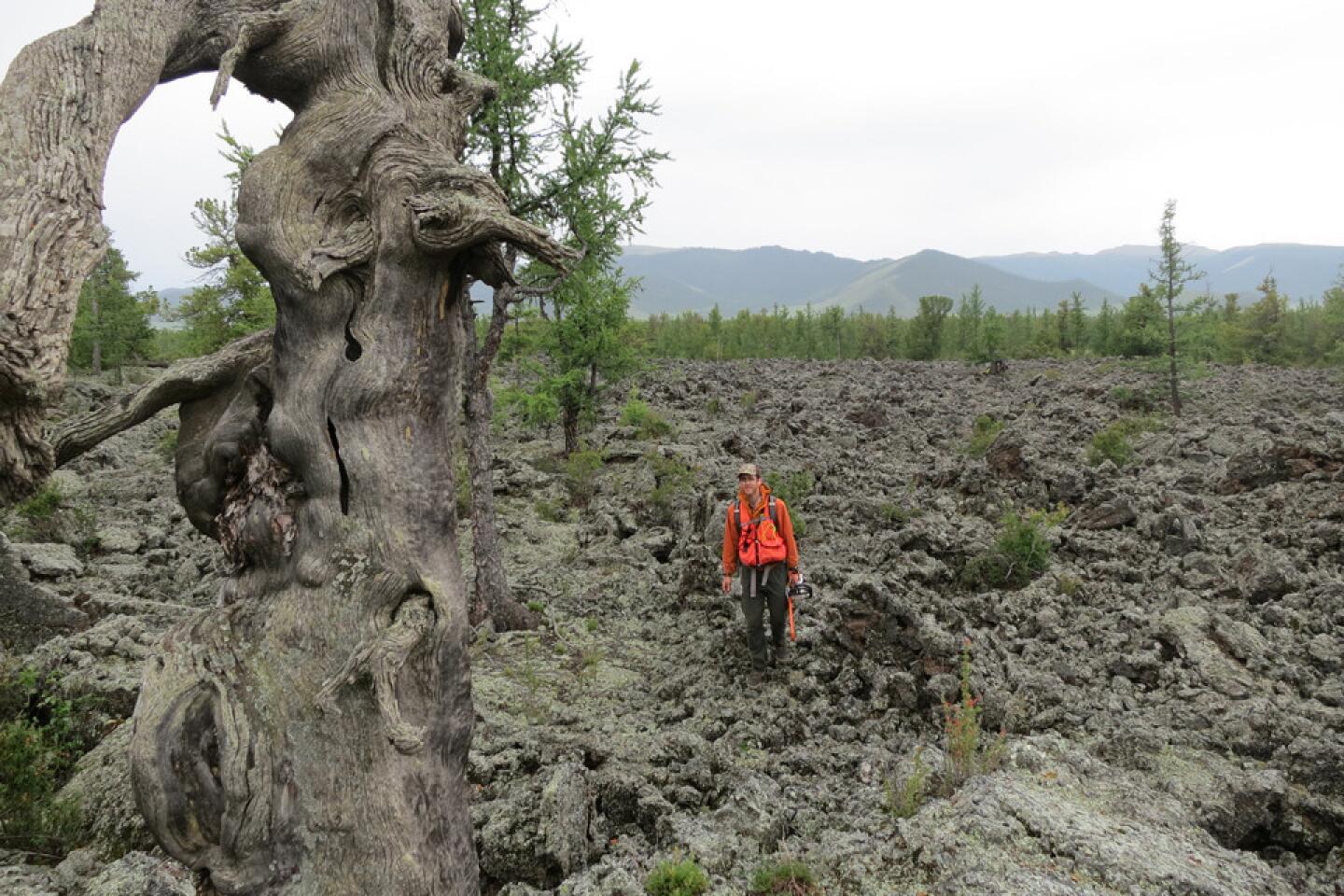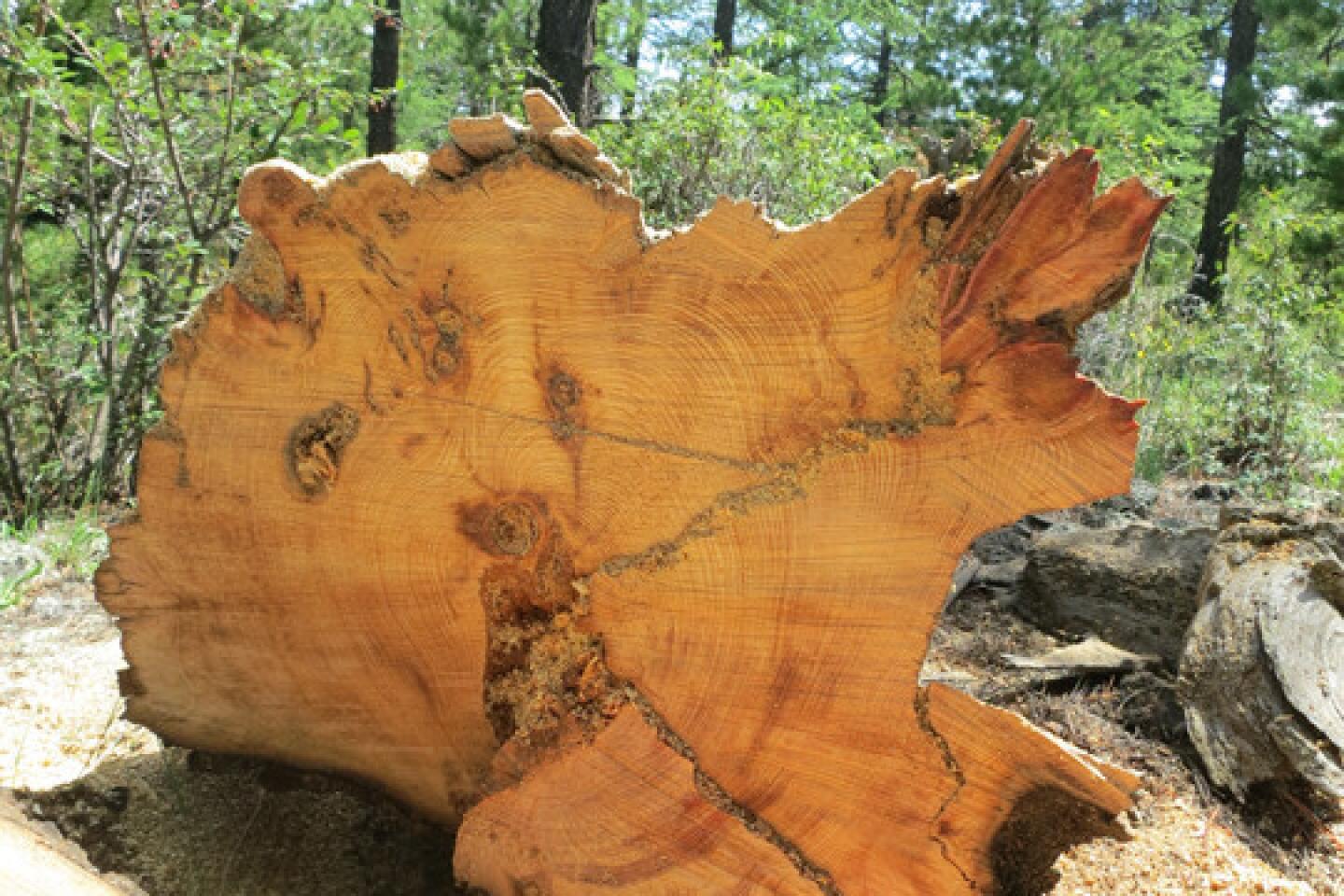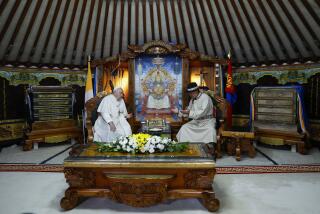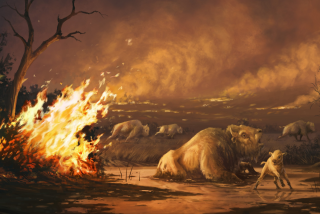Did rainy climate aid Genghis Khan? Tree rings offer clues.
In the rings of ancient and gnarled trees, scientists have found evidence of a period of an unusual stretch of warmth and wetness in Mongolia between the years 1211 and 1225 — the exact time that Genghis Khan was in power.
Coincidence? They think not.
This unusual period of mild temperatures and unprecedented rain in an area traditionally known for its cold and arid climate would probably have increased the productivity of grasslands of the Mongolian steppe, the researchers say. The abundant grass would in turn increase the number of grazing animals that could live off it.
Members of Genghis Khan’s army reportedly had five horses apiece, which allowed them to swiftly conquer an enormous area that stretched from East Asia to Eastern Europe, as well as parts of northern India and the Middle East. They also needed great herds of livestock to provide them with food.
“Nature set the table, and Genghis Khan came to eat,” said Amy Hessl, a tree-ring scientist at West Virginia University. “The culture and the people capitalized on that.”
Her colleague Neil Pederson, a research scientist in the Tree Ring Research Laboratory of Columbia University’s Lamont-Doherty Earth Observatory in Palisades, N.Y., put it this way: “Grass was the power of the day.”
The story of the unusual wet period in Mongolian history was written in scores of ancient Siberian pine trees that Pederson and Hessl first sampled on a whim during a research trip to central Mongolia in 2010. The trees were growing on a nearly soil-less lava field that was dotted with horse skeletons.
“There were so many that we started calling it ‘where horses go to die,’” Hessl said.
Because the trees in this area are severely water-stressed, they are particularly sensitive to changes in the weather. And because they grow in such an arid and cool environment, even the trunks of dead trees remain well preserved for centuries.
On that first trip, the two scientists gathered core samples from about a dozen trees — some living, some dead. When they got them back to the lab, they were surprised to discover that some of those samples came from trees that were alive 1,000 years ago.
They also found evidence of a climate narrative they couldn’t ignore: For a small stretch of time, some of the rings were visibly thicker.
“At first I was just excited that we had wood from the time of Chinggis Khan,” said Pederson, using an Asian name for the legendary ruler. “After you work in Mongolia for a year, you realize how important Chinggis is for the Mongolian people. He is their George Washington — there are TV commercials with him drinking vodka or talking on a cellphone. It’s 800 years later, and he’s still everywhere.”
Pederson hadn’t been looking for any changes in the rings around the time of Genghis Khan’s reign. But they were impossible to ignore.
“It was really the trees saying, ‘Look how wide our rings are right here,’” he said.
Pederson and Hessl returned to the same site two years later to gather more samples — cutting cross-sections of dead trees that had already fallen over and taking thin, pencil-sized cores from trees that were still alive. Those samples confirmed the initial findings: The expansion of the Mongolian empire coincided with an unusually warm and wet climate.
The pair published their findings this week in the Proceedings of the National Academy of Science.
Jack Weatherford, author of “Genghis Khan and the Making of the Modern World,” said that although the findings are intriguing, he is not convinced they had much to do with Genghis Khan’s ascent to power.
“I am always delighted when we have more information about the Mongol empire, but I am skeptical of any single variable as the explanation for the Mongol rise,” said Weatherford, an anthropology professor at Macalester College in St. Paul, Minn., who is now retired and living in Mongolia.
“Genghis Khan’s army was approximately 100,000; yet he conquered most of China, which had possibly a million soldiers as well as millions of other people,” Weatherford said. “What role did rain or drought have in that conquest? The connection seems tenuous.”
He also wondered why the extra rainfall would have helped Genghis Khan but not his Chinese adversaries or the other tribes in Mongolia at the time, like the Kereyid, Naiman and Tartars.
To address questions like this, Pederson and Hessl have partnered with experts in other disciplines to help paint a fuller portrait of the environment in which Genghis Khan’s empire began and how that might have contributed to his military success.
Avery Cook Shinneman, a biologist who was a postdoctoral fellow at the University of Washington, will analyze Mongolian lake sediment to see if the quantity of fungal spores that grow in animal dung corresponds with a larger population of horses and livestock at the time. Hanqin Tian, an ecologist at Auburn University who studies modern grasslands, will create a model to illustrate how grass production on the steppe would be influenced by the climate recorded in the trees. And historian Nicola Di Cosmo at the Institute for Advanced Study in Princeton, N.J., will consider how this climate information fits in with what is known of the time.
Already, Di Cosmo said, the tree-ring research is helping to debunk the theory that drought conditions drove the Mongols to leave the steppe in search of more fertile lands. The tree rings suggest that during times of drought, the Mongol tribes were too busy to build an empire because they were fighting among themselves over scarce resources. A more likely scenario is that a warm and wet climate allowed Genghis Khan to centralize power in one part of the steppe and support all the people who lived there.
But to say anything definitive, much more research needs to be done.
“The tree-ring research is interesting, and if we can get more data from other parts of the country and a clearer map of climate at the time, I would feel on safer ground,” said Di Cosmo, who contributed to the Hessl-Pederson study. “But if you want to learn about these people who have very little written history, we have to put together these scraps of information wherever we can get them.”











